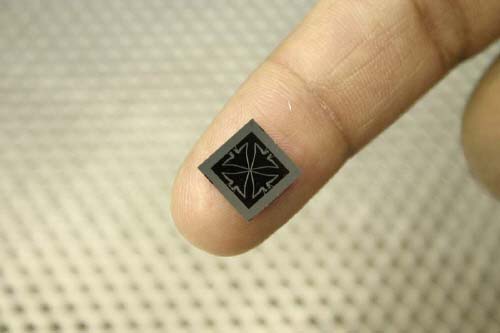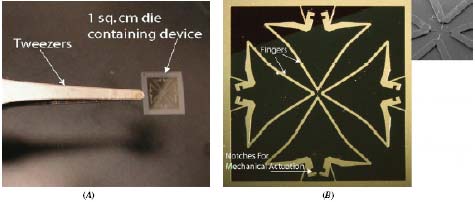New manipulation tool for micro and nano technology
US researchers have invented a new pick-up device that enables manipulation of micrometer-sized objects using combined " fingers ". This component works similarly to human manipulation on centimeter-sized objects, much better than the micro clamps in use with only the card opening or closing to hold the object. This design can be improved to work on nanoscale objects in the future.
Manipulating on small objects is important in the technology of assembling and surveying objects in miro and nano scales as well as studying biological cells and tissues. Currently, most components for this are mechatronic micro clamps with 2 " pins " at one end. These devices have many limitations because they can only be opened or closed to keep objects that cannot be moved from one place to another. To complete the next task, the clamps need to be raised to another position capable of twisting and turning and resulting in the system becoming large and bulky.

Photos of components (Photo: VatLyVietNam)
Recently, Laxman Saggere and Sandeep Krishnan at the University of Illinois Chicago (USA) have found solutions to this problem. Their microphone manipulation system contains a system of fingers that can be combined that can hold and move objects from one position to a defined boundary on a flat surface. These fingers can independently start and precisely control the movement of fingertips at a level of only a few nanometers. This component contains 4 symmetrically placed fingers, however the number may increase in the future to enhance manipulation as well as expand the area where the object can move, according to 2 researchers. said.

Enlarge photo of components. (Photo: VatLyVietNam)
Saggere and Krishnan make components using traditional micro-mechanics. " An important aspect of the component is that it has the structure of monolithic rock with different parts connected together flexibly" - Saggere explained. - "Therefore, the complete structure can be fabricated on chips without the need to assemble other individual parts".
Saggere and Krishnan said that the new components could be widely used for micro-factories in the future."The combination of holding and shifting functions makes the device ideal for randomly orientating and assembling micro-sized and even nano-sized objects" - Saggere told Nanotechweb.org - "This component can also be used to manipulate biological cells such as decoration or impact."

Experimental diagram. (Photo: VatLyVietNam)
The group is also promoting the improvement of component functions. It will include connecting with control systems to perform manipulations, improving the tip of the fingers to match the nano-sized objects (the group has assumed the use of carbon nanotubes). Time to extend the design so that the device can work in two dimensions, instead of just moving in one plane. The results of the group have just been published in the Journal of Micromechanics and Microengineering.

Manipulation on a microspheres of 15 microns in diameter. (Photo: VatLyVietNam)
The Doctrine of Independence
- Microfiber contains color as anti-counterfeiting tool
- Japan's 'miracle' technology promises to clean the To Lich River for 2 months
- Successful fabrication of 'nano-springs' helps break down marine plastic
- Vietnam for the first time has a factory that applies nano-silver technology
- Nano robot technology will be the future of medicine
- Exchanging experiences on researching Nano materials
- Trend Micro acquires HijackThis spyware removal tool
- Using nano coated glass stimulates growth of green vegetables
- Silver Nano - Technology to protect children's health
- Debate about nanotechnology
- Strange technology: Austrian 'stealth' time
- Camera nano speed of light
 Daily use inventions come from universities
Daily use inventions come from universities Special weight loss device helps prevent appetite
Special weight loss device helps prevent appetite 8 inventors were killed by their own inventions
8 inventors were killed by their own inventions Iran invented a motor car powered by water
Iran invented a motor car powered by water